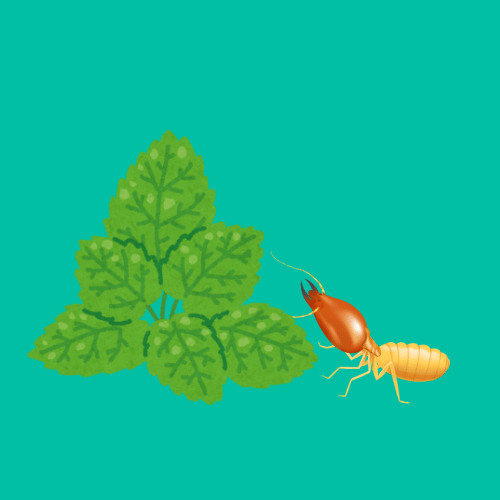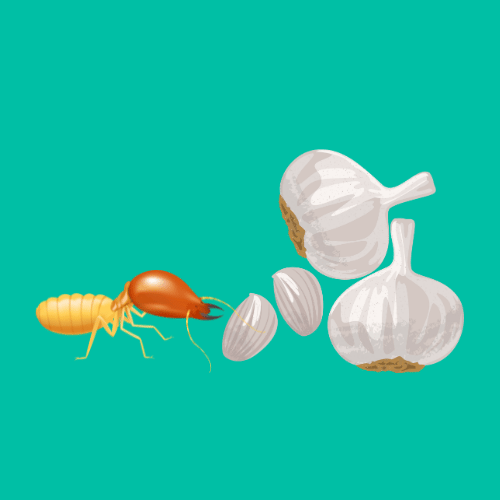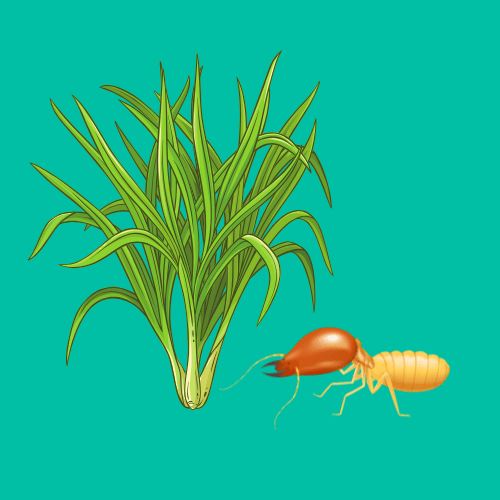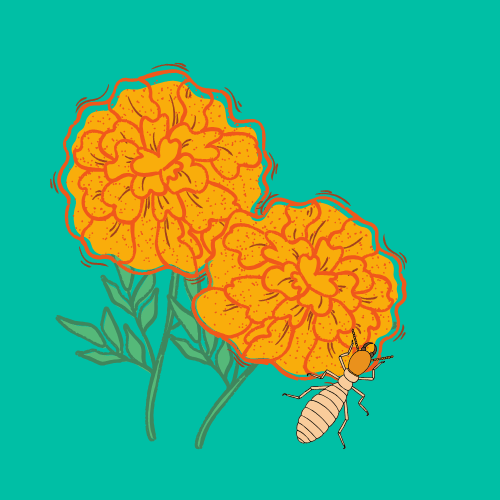Top Plants to Deter Termites: Natural Solutions for Pest Control

Termites are a persistent pest that can cause significant damage to wooden structures, furniture, and homes.
While chemical treatments are widely used, turning to nature provides an eco-friendly, sustainable alternative.
Certain plants are known to repel termites while enhancing your garden’s aesthetics. In this guide, we’ll dive deeper into how to grow these termite-repelling plants and get the most out of their pest-fighting properties.
Get our Gardening Buddy and find veggies that fit your conditions best.
You Can Grow It!
Vetiver Grass (Chrysopogon zizanioides)
Why Vetiver Grass deters Termites
Vetiver grass is rich in essential oils that termites find unappealing. Its dense roots form a natural barrier, making it difficult for termites to cross.
How to Grow Vetiver Grass
- Soil Requirements: Thrives in well-drained soil. It can adapt to various soil types, including sandy and clay soils.
- Sunlight: Prefers full sun but can tolerate partial shade.
- Watering: Drought-tolerant once established but requires regular watering during its initial growth phase.
- Planting Tips: Space plants about 1 foot apart to create an effective barrier. Plant it around foundations, fences, or termite-prone areas.
Vetiver Grass Care Tips
- Prune regularly to maintain a tidy appearance.
- Use mulch made from dried vetiver grass to reinforce its termite-repelling properties.

Mint (Mentha spp.)
Why Mint deters Termites
Mint’s strong aroma disrupts termites’ sensory receptors, deterring termites from infested areas.
How to Grow Mint
- Soil Requirements: Prefers moist, well-drained soil enriched with organic matter.
- Sunlight: Thrives in partial shade to full sun.
- Watering: Keep the soil consistently moist. Mint enjoys slightly damp conditions.
- Planting Tips: Plant in containers to prevent mint from spreading uncontrollably.
Mint Care Tips
- Harvest leaves frequently to prevent the plant from flowering and spreading.
- Divide the plant every couple of years to maintain its vigor.

Eucalyptus (Eucalyptus spp.)
Why Eucalyptus deters Termites
Eucalyptus produces natural oils with strong aromas that termites find unpleasant.
How to Grow Eucalyptus
- Soil Requirements: Prefers well-drained soil with a slightly acidic to neutral pH.
- Sunlight: Requires full sun for healthy growth.
- Watering: Water young plants regularly. Once established, eucalyptus is drought-tolerant.
- Planting Tips: Start with a seedling or young tree. Space plants several feet apart, as eucalyptus can grow quite large.
Eucalyptus Care Tips
- Prune to manage size and shape.
- Avoid planting too close to buildings, as the roots can spread aggressively.

Garlic (Allium sativum)
Why Garlic deters Termites
Garlic’s sulfuric compounds act as a natural repellent, keeping termites and other pests away.
How to Grow Garlic
- Soil Requirements: Garlic prefers loose, well-draining soil with plenty of organic matter.
- Sunlight: Needs full sun for 6–8 hours a day.
- Watering: Keep the soil evenly moist but not soggy.
- Planting Tips: Plant individual cloves with the pointed side up, about 2 inches deep and 4 inches apart, during the fall.
Care Garlic Tips
- Mulch the area to retain moisture and suppress weeds.
- Harvest when the tops begin to yellow and dry out.

Lemongrass (Cymbopogon citratus)
Why Lemongrass deters Termites
Lemongrass contains citronella, an essential oil that repels termites, mosquitoes, and other pests.
How to Grow Lemongrass
- Soil Requirements: Prefers rich, well-draining soil. Add compost for better growth.
- Sunlight: Requires full sun for at least 6 hours a day.
- Watering: Keep the soil consistently moist but not waterlogged.
- Planting Tips: Start with lemongrass stalks from a nursery or grocery store. Place the stalks in water until roots appear, then transplant them to soil.
Lemongrass Care Tips
- Fertilize monthly with organic compost or a balanced fertilizer.
- Harvest the stalks regularly to encourage new growth.

Marigolds (Tagetes spp.)
Why Marigolds Deters Termites
Marigolds emit a strong scent that repels termites and other pests like nematodes.
How to Grow Marigolds
- Soil Requirements: Grows well in moderately fertile, well-drained soil. Avoid overly rich soil, as it can reduce flower production.
- Sunlight: Requires full sun.
- Watering: Water when the topsoil feels dry, but avoid overwatering.
- Planting Tips: Sow seeds directly into the soil after the last frost. Space plants 6–12 inches apart, depending on the variety.
Marigolds Care Tips
- Deadhead spent flowers to encourage continuous blooming.
- Use marigold leaves as mulch around wooden structures for extra protection.

Catnip (Nepeta cataria)
Why Catnip Deters Termites
Catnip contains nepetalactone, a compound that repels termites and other pests while attracting cats.
How to Grow Catnip
- Soil Requirements: Prefers well-draining soil.
- Sunlight: Thrives in full sun but tolerates partial shade.
- Watering: Water sparingly, as catnip is drought-tolerant once established.
- Planting Tips: Sow seeds directly in the garden or start indoors and transplant after the last frost.
Catnip Care Tips
- Trim regularly to prevent flowering and encourage bushy growth.
- Protect plants from cats by surrounding them with wire mesh.

Clove (Syzygium aromaticum)
Why Clove Deters Termites
Clove plants produce eugenol, an oil known for its pest-repelling properties.
How to Grow Clove
- Soil Requirements: Needs rich, well-draining soil with a slightly acidic pH.
- Sunlight: Requires partial to full sun.
- Watering: Keep the soil evenly moist, especially for young plants.
- Planting Tips: Plant clove trees in tropical or subtropical climates. They take time to mature, so patience is key.
Clove Care Tips
- Apply organic mulch to retain soil moisture.
- Fertilize with a balanced fertilizer every few months.

Chrysanthemums (Chrysanthemum spp.)
Why Chrysanthemums Deters Termites
Chrysanthemums produce pyrethrins, a natural insecticide that repels pharao ants, termites, and other pests.
How to Grow Chrysanthemums
- Soil Requirements: Prefers fertile, well-drained soil.
- Sunlight: Requires full sun for at least 6 hours a day.
- Watering: Keep the soil moist but avoid waterlogging.
- Planting Tips: Start from seeds, cuttings, or transplants. Space plants 18–24 inches apart for proper air circulation.
Chrysanthemums Care Tips
- Pinch back the stems to encourage bushier growth.
- Mulch around plants to retain moisture and suppress weeds.

Find the Vegetables that are Best for you
By incorporating these termite-repelling plants into your garden, you’re not just creating a natural pest barrier—you’re also enhancing the beauty and functionality of your outdoor space.
With proper planting and care, these plants will thrive while helping to keep termites and other pests at bay.
You Can Grow It!
Get our Gardening Buddy and find veggies that fit your conditions best.
You Can Grow It!
Partners and Sponsors
We are forever grateful to our partners and sponsors. Send an email to team @ strongecho.com and let’s see how we can grow each other’s impact!






